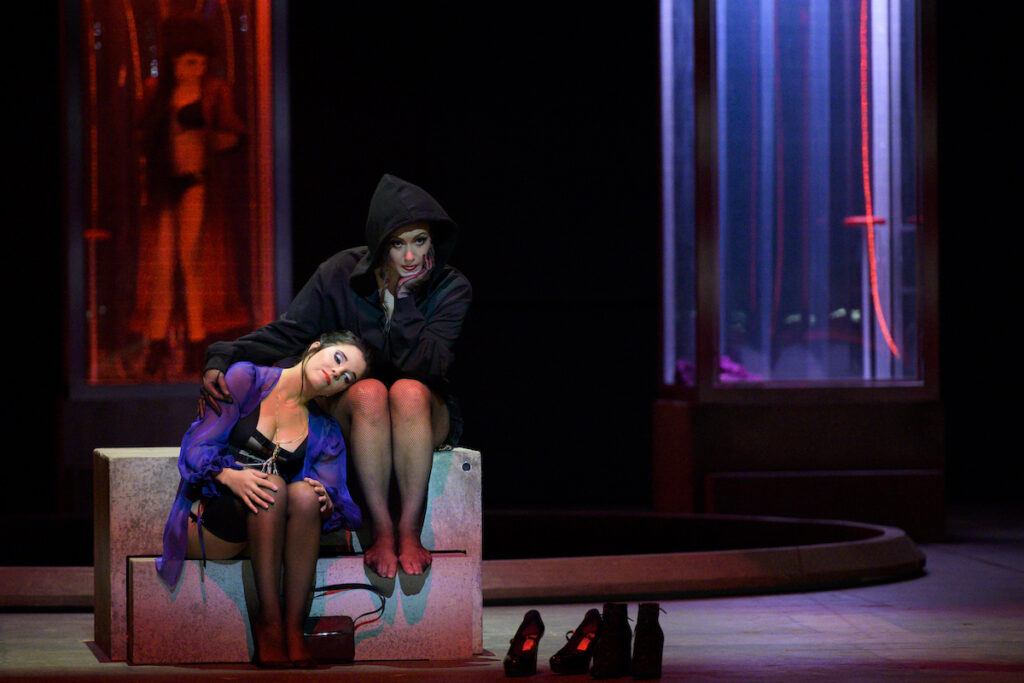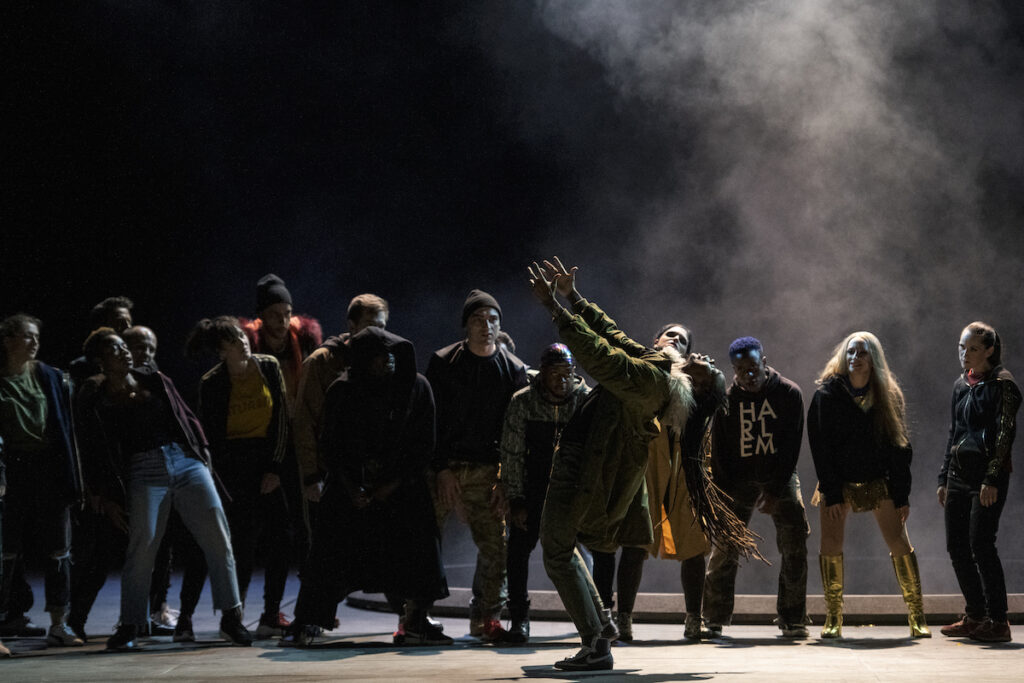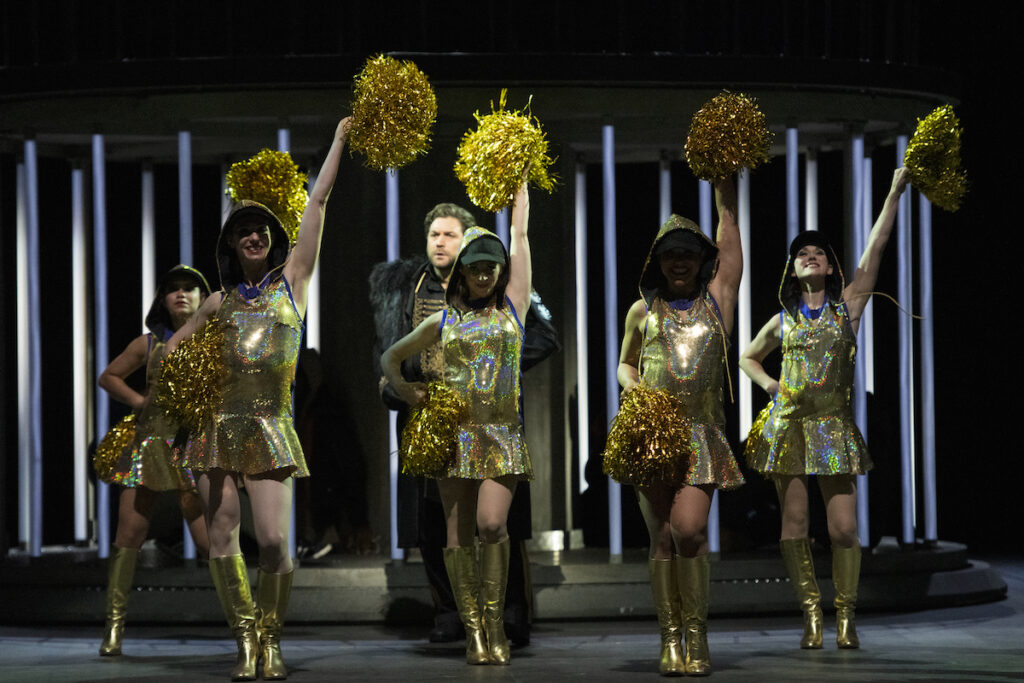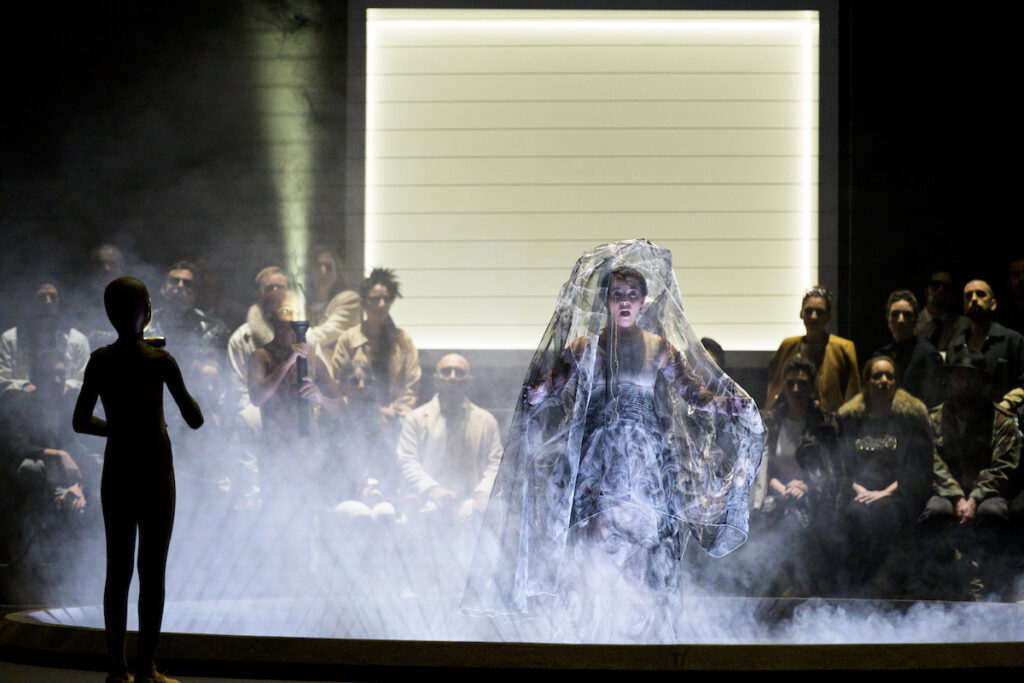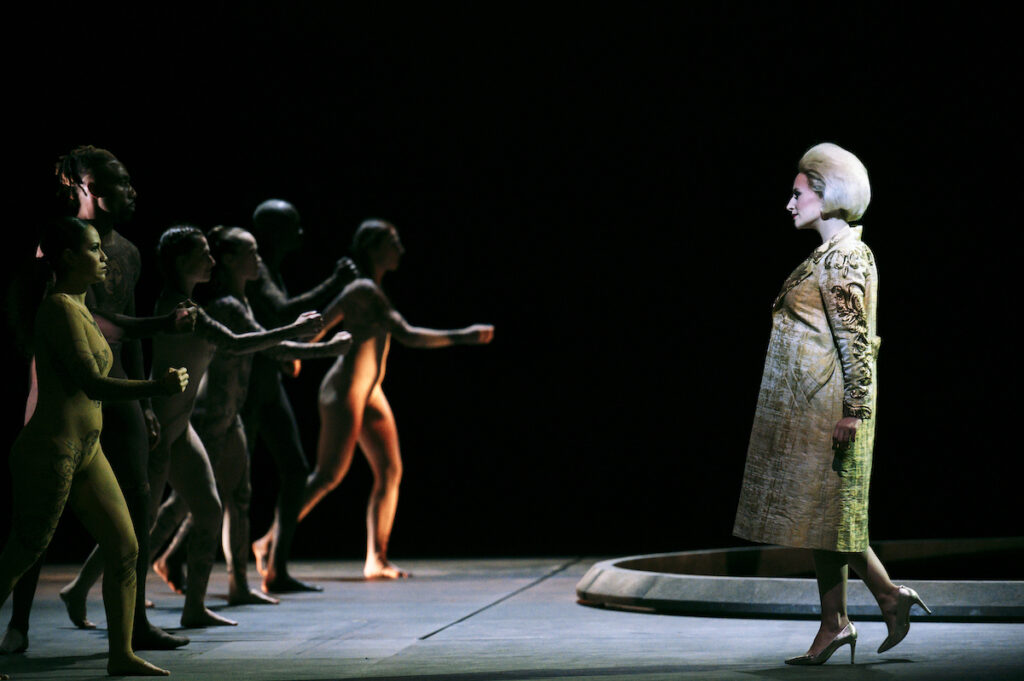

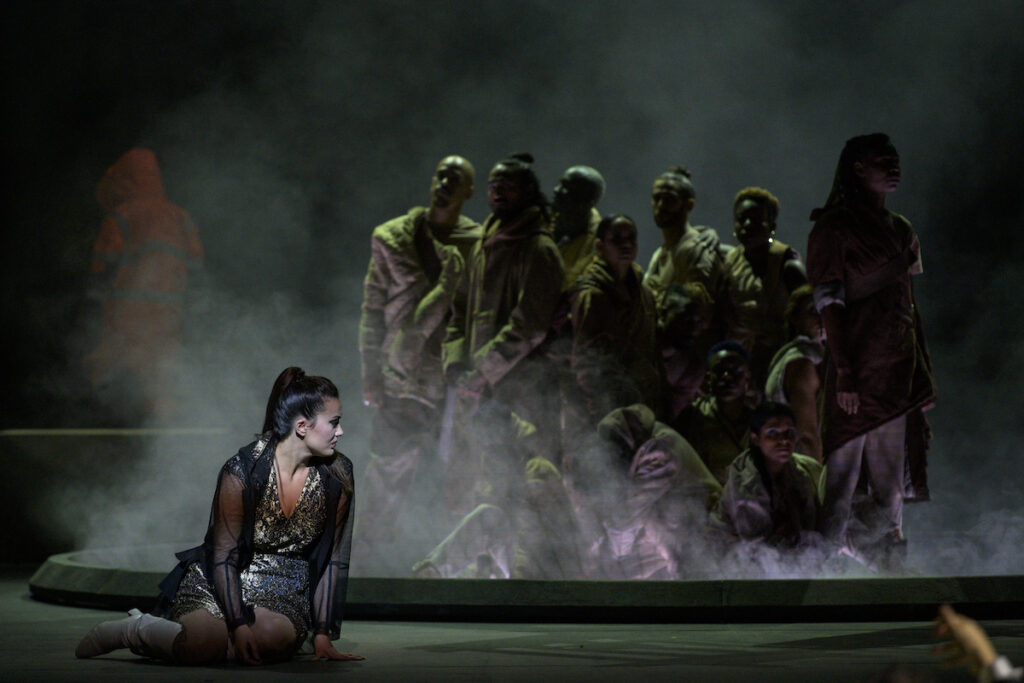
“A unanimous standing ovation at Paris Bastille for Jean-Philippe Rameau’s Les Indes Galantes, performed by Leonardo García Alarcón and his ensemble, Cappella Mediterranea, directed by Clément Cogitore and choreographed by Bintou Dembélé. It is not only a Baroque delight, but a delight in and of itself.”
Stephane Gilbert, Opera Magazine
“Leonardo García Alarcón captivates us right from the opening with the way he sculpts the sound of every note with his bare hands, indicating every slight inflection and pushing his orchestra forward, while remaining attentive to the singing and the presence of the soloists and choirs…”
France TV
Les Indes Galantes was a critical work of the Age of Enlightenment and remains a dazzling piece of entertainment. But Rameau’s first opera-ballet also attests to the Europeans perception of the Other, whether Turkish, Incan, Persian or Native American. In 2017, director Clément Cogitore made an explosive and highly acclaimed film in which he adapted an extract from Les Indes galantes with the help of Krump dancers. This time, he and choreographer Bintou Dembélé take on this enchanting opera in its entirety, reinscribing it in an urban and political space where boundaries are questioned. Leonardo García Alarcón and Cappella Mediterranea accompany them on the musical front.
Opera-ballet with a prologue and four entrées
Music by Jean-Philippe Rameau
Libretto by Louis Fuzelier
Dancers from Compagnie Rualité
Cappella Mediterranea
Chœur de chambre de Namur
Maîtrise des Hauts-de-Seine / Chœur d’enfants de l’Opéra national de Paris
What can you tell us about this production, which is now in rehearsal? How do you feel about working with LA krump?
I was touched by how the people on stage, including the dancers, were able to work on the different tableaux, which each describe actions that took place in very distant countries (such as the Incas of Peru, the Persians, Turkey, North America…). The composer’s idea was to build upon the notion of “foreigner”. At the time, this meant someone far away. Someone one could only imagine and yet also fear. Part of that fear was that the foreigner might one day enter our reality. What does “foreigner” mean today? The foreigner no longer lives far away. The foreigner lives with us, on the same floor as us, next door to us. How are we to interpret Rameau’s vision for the Paris Opera’s 350th anniversary? At the end of the day, this opera also makes us reflect on our own – sometimes unconscious – hypocrisy, including our tendency to fear the unknown and anything that is different from us. […]
As far as krump is concerned, the director was looking for a contemporary North American dance to represent today’s rhythmic impulses. Personally, I’m touched to see people dancing to baroque music, no matter what the style of the dance. It shows that Time does not exist. As soon as you start playing music, time stops. By mixing different eras and incorporating modern dances, these composers no longer only belong to connoisseurs.
So there will be several dance styles in these Indes galantes, not just krump?
Yes. The krump sequence is relatively brief in the show. It is almost trivial and yet it is so rich. At some point, you’re going to wonder where the krump is, because it’s going to take so long to get there. Bintou Dembélé’s choreography is very carefully thought out, very symmetrical. He has a Cartesian way of thinking. Everything has to be perfectly choreographed and there’s no room for improvisation. In that respect we’re very close to Rameau! […]
Interview by Opéra Online
“The audience gave this performance a long standing ovation. They were obviously in a state of shock.”
Maurice Ulrich, L’Humanité
“What’s happening at the Opéra Bastille? An earthquake, apparently. At the end of this Indes galantes, 2,700 people were on their feet applauding non-stop….”
Guillaume Tion, Libération
“This new production of “Les Indes Galantes” was a huge hit with the audience.”
Marie-Aude Roux, Le Monde
“No doubt the best version of Les Indes Galantes we have ever heard.”
Guillaume Saintagne, Forum opéra
“The real surprise comes from the pit. Leonardo García Alarcón directs a lively Cappella Mediterranea made up of fifty-five musicians and delivers a dream version of Rameau. It contains so many colours, rhythms and minute details.”
Vincent Borel, Classic.com
“The conductor, Leonardo García Alarcón, deftly leads his ensemble, Cappella Mediterranea. The ariettas are refined, the dances punchy and the heroic moments powerful. The precision and clarity of the Choeur de chambre de Namur is impeccable.”
Nicolas Hans, revopera.com
“At last an absolute triumph for Leonardo García Alarcón, whose ensembles rise to the acoustic challenge without relinquishing their dazzling clarity. His Indes Galantes is a model when it comes to the pulse, momentum, precision and delicacy. Nothing new, really? Yes and it’s Rameau!”
Mehdi Mahdavi, Opéra Magazine
